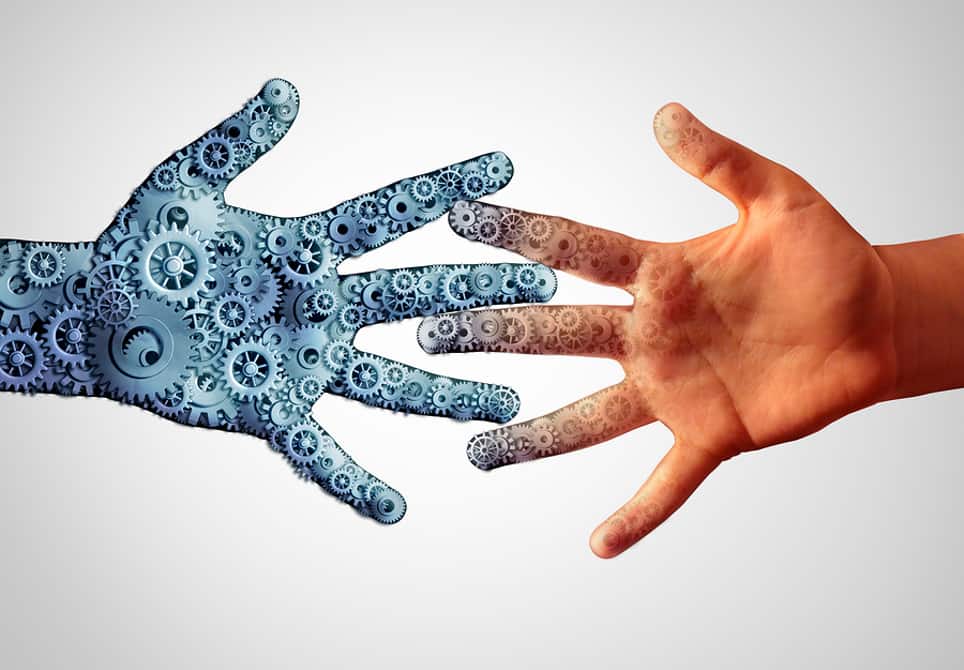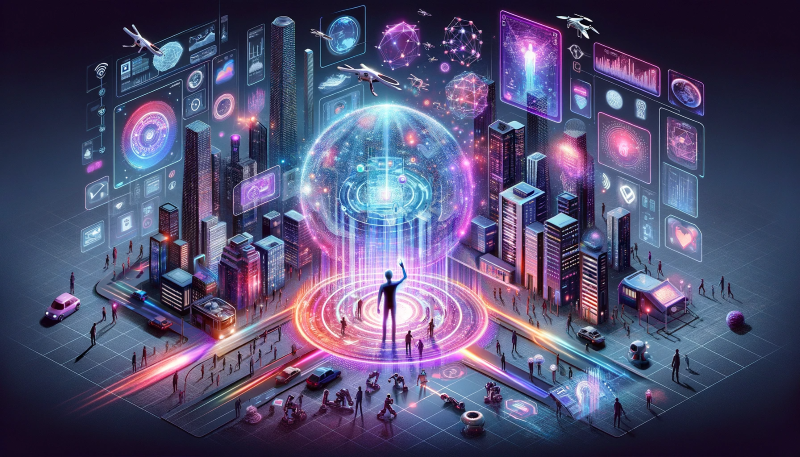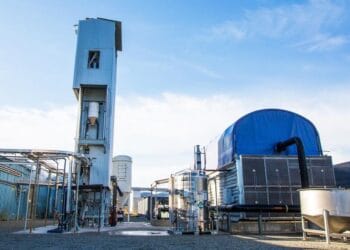At the intersection of biology, technology, and human ingenuity lies one of the most profound and rapidly advancing fields of the 21st century: bio-engineering. This is the discipline where life itself becomes the raw material. Scientists are no longer merely observing the biological world; they are actively designing, editing, and building with its fundamental components. From reprogramming the genetic code that defines us to printing living tissues and organs, bio-engineering is unlocking capabilities that were once the exclusive domain of science fiction. The futures it promises are nothing short of revolutionary, offering radical new solutions to humanity’s oldest challenges in medicine, agriculture, energy, and environmental sustainability.

This article explores the landscape of this incredible field, delving deep into the core technologies that are making it all possible. We will unpack the power of gene editing, the creative potential of synthetic biology, and the medical miracles of regenerative medicine. Furthermore, we will examine how bio-engineering is poised to overhaul our industries and food systems, paving the way for a more sustainable and resilient civilization. However, with this immense power comes immense responsibility. We will also confront the complex ethical questions and societal dilemmas that accompany our newfound ability to engineer life. This is not just a scientific revolution; it is a turning point for humanity, and understanding its scope is essential for navigating the world it is creating.
The New Bedrock: Decoding and Editing the Genome
The ability to read and write DNA with precision is the foundational pillar of modern bio-engineering. For decades, altering the genetic code of a living organism was a clumsy, slow, and often unpredictable process. The arrival of powerful gene-editing tools, most notably CRISPR-Cas9, has completely changed the game, providing a level of speed, accuracy, and accessibility that has supercharged research and development across the globe.
A. CRISPR-Cas9: The Genetic Scalpel Imagine having a word processor for the book of life. That, in essence, is what CRISPR-Cas9 provides. This revolutionary technology, derived from a natural defense system found in bacteria, allows scientists to make precise changes to the DNA of an organism. It works in two key parts: a guide RNA that acts like a GPS, locating a specific sequence of DNA, and a Cas9 enzyme that acts like a molecular scissor, cutting the DNA at that precise spot. Once the cut is made, scientists can either let the cell’s natural repair mechanisms fix the break (often disabling a faulty gene) or insert a new piece of DNA to correct a mutation or add a new function.
The applications of this technology are vast and staggering:
- Curing Genetic Diseases: For the first time, we have a viable pathway to correcting the root cause of inherited diseases. Clinical trials are underway for conditions like sickle cell anemia and beta-thalassemia, where a patient’s own stem cells are edited outside the body and then returned, effectively curing the disease. Therapies are also being developed for Huntington’s disease, cystic fibrosis, and certain types of congenital blindness.
- Advanced Cancer Therapies: Bio-engineers are using CRISPR to create more potent “living drugs.” In CAR-T cell therapy, a patient’s immune cells (T-cells) are extracted, genetically engineered to recognize and attack cancer cells, and then infused back into the patient. CRISPR makes this process faster and allows for more complex “programming” of the immune cells to improve their effectiveness and reduce side effects.
- Research and Drug Discovery: CRISPR has accelerated basic biological research exponentially. Scientists can now quickly “knock out” genes in cells or animals to understand their function, creating highly accurate models of human diseases and dramatically speeding up the process of discovering and testing new drugs.
B. Beyond CRISPR: The Next Generation of Gene Editors While CRISPR-Cas9 is the most famous tool, the field is constantly evolving. Scientists have developed new variations, such as “base editing” and “prime editing.” These are even more precise technologies that can change a single letter of the genetic code without making a double-stranded cut in the DNA. This is like using a pencil and eraser instead of scissors and glue, reducing the risk of unintended errors and opening the door to correcting an even wider range of genetic defects. These advancements are refining our ability to rewrite the code of life with ever-increasing safety and sophistication.
Synthetic Biology: Building Life from the Ground Up
If gene editing is about modifying existing life, synthetic biology is about creating entirely new biological parts, devices, and systems. It applies engineering principles—like standardization, modularity, and computer-aided design—to biology. Practitioners aim to make biology a predictable and programmable engineering discipline. Instead of relying on what nature has already produced, they design and build novel biological functions from scratch.
A. Microorganisms as Living Factories At the forefront of synthetic biology is the reprogramming of simple organisms like bacteria and yeast to serve as microscopic factories. By designing and inserting new genetic circuits, scientists can command these microbes to produce a huge range of valuable substances that are difficult or unsustainable to produce through traditional chemistry.
- Sustainable Biofuels: Engineered algae and yeast can be programmed to consume agricultural waste or even carbon dioxide and convert it into advanced biofuels like butanol or biodiesel. This offers a path to renewable energy that doesn’t compete with food crops and helps close the carbon loop.
- Pharmaceuticals and Medicines: Many life-saving drugs are derived from rare plants. Synthetic biology allows us to identify the genes responsible for producing these compounds and transfer them into yeast. A key example is the production of artemisinin, a crucial anti-malarial drug, which can now be brewed in large fermentation vats, stabilizing supply and lowering costs.
- Novel Materials: Bio-engineers are designing bacteria to produce bioplastics that are fully biodegradable, high-strength spider silk for textiles and medical use, and even materials that can “heal” themselves when damaged.
B. Biosensors for Diagnostics and Environmental Monitoring Synthetic biology is also creating living sensors. By engineering genetic circuits that produce a detectable signal (like a change in color or fluorescence) in the presence of a specific molecule, scientists can create highly sensitive diagnostic tools. Imagine a simple paper-strip test that can detect a virus like Zika or Dengue in a drop of blood, or a field of plants that change color to indicate the presence of pollutants in the soil. These “smart” biological devices can provide cheap, rapid, and deployable monitoring solutions for healthcare and the environment.
Regenerative Medicine: Rebuilding the Human Body

One of the most awe-inspiring frontiers of bio-engineering is the quest to repair, replace, and regenerate damaged human tissues and organs. Combining knowledge from stem cell biology, materials science, and engineering, regenerative medicine aims to coax the body into healing itself in ways it couldn’t before, potentially making organ transplant waiting lists and chronic degenerative diseases a thing of the past.
A. Tissue Engineering and 3D Bioprinting Tissue engineering involves growing living tissues in a lab for therapeutic purposes. The basic recipe involves three main ingredients:
- Cells: Often a patient’s own stem cells, which have the potential to develop into various types of tissue.
- Scaffolds: Biodegradable, porous structures made from biocompatible materials. These provide a template for the cells to grow on, giving the new tissue its shape and structure.
- Growth Factors: Biological signals that instruct the cells what type of tissue to become (e.g., bone, cartilage, or skin).
This field has seen incredible advances with the advent of 3D bioprinting. A bioprinter works much like a regular 3D printer, but instead of plastic, it deposits layers of a “bio-ink”—a gel containing living cells—to build complex three-dimensional structures. Scientists have already successfully printed skin for burn victims, cartilage patches for damaged joints, and even small-scale, functioning prototypes of organs like livers and kidneys. While printing a fully functional, transplantable organ is still a long-term goal, the technology is already being used to create highly accurate “organoids” for drug testing, providing a much better model than traditional animal studies.
B. Stem Cell Therapies Stem cells are the body’s master cells, and bio-engineers are harnessing their power to treat a wide array of conditions. By guiding stem cells to differentiate into specific cell types, it’s possible to replace cells lost to disease or injury. For example, researchers are working on therapies to replace dopamine-producing neurons in Parkinson’s patients, insulin-producing islet cells for diabetics, and damaged cardiac muscle cells after a heart attack. This approach shifts the focus from managing symptoms to providing a true biological cure.
Transforming Agriculture and Industry

Bio-engineering’s impact extends far beyond the clinic. It is fundamentally reshaping how we produce food and power our industries, offering a powerful toolkit for building a more sustainable and efficient world.
A. The Next Green Revolution Genetic engineering is creating crops with remarkable new traits that are critical for feeding a growing global population in the face of climate change.
- Enhanced Nutrition: A landmark example is “Golden Rice,” which was engineered to produce beta-carotene, a precursor to Vitamin A. It was designed to combat Vitamin A deficiency, a major cause of childhood blindness in the developing world.
- Drought and Pest Resistance: By inserting genes from hardy organisms, scientists are developing crops that can thrive in arid conditions and resist devastating pests, reducing the need for water and chemical pesticides.
- Improving Photosynthesis: In an ambitious project, bio-engineers are working to improve the efficiency of photosynthesis itself, the fundamental process by which plants convert sunlight into energy. A modest improvement could lead to a massive increase in crop yields without requiring more land.
B. Green Industrial Processes In the industrial sector, bio-engineering is driving a shift away from fossil-fuel-based chemistry toward cleaner, “green” chemistry. Engineered enzymes are now used in everything from laundry detergents (to break down stains at lower temperatures) to the manufacturing of textiles and paper, significantly reducing energy consumption and toxic waste.
The Ethical Frontier: Navigating the Power to Create
With the god-like power to rewrite life comes profound ethical responsibilities. The rapid advancement of bio-engineering has outpaced public understanding and regulatory frameworks, leading to urgent and complex societal debates.
- Safety and Unintended Consequences: How can we ensure that releasing genetically modified organisms into the environment won’t have unforeseen negative impacts on biodiversity? What are the long-term health effects of using gene therapies?
- Equity and Access: Will these revolutionary and expensive treatments only be available to the wealthy, thereby widening the gap between the rich and the poor? How do we ensure equitable access to life-saving technologies?
- The Concept of “Natural”: Perhaps the most contentious debate surrounds human germline editing—making heritable changes to eggs, sperm, or embryos. This opens the door to eliminating genetic diseases from a family line forever, but it also raises the specter of “designer babies” and eugenics, where parents could select for traits like intelligence or athletic ability. This forces us to ask fundamental questions about what it means to be human and whether we should tamper with our own evolution.
Navigating this new frontier requires a robust global dialogue involving scientists, ethicists, policymakers, and the public. Transparency, education, and thoughtful regulation are paramount to ensuring that these powerful tools are used wisely and for the benefit of all humanity.
Engineering a New Reality
Bio-engineering is no longer a futuristic concept; it is a present-day reality that is actively reshaping our world. It holds the promise of a future free from devastating genetic diseases, powered by clean energy, and supported by a sustainable food supply. The work being done in labs today—from editing a single letter of DNA to printing living tissue—is laying the foundation for a healthier, more resilient, and more capable human civilization.
However, the path forward is one that must be walked with caution, foresight, and a deep sense of ethical responsibility. The power to engineer life is the ultimate double-edged sword. By fostering open conversation and building robust ethical guardrails, we can harness the immense good of this scientific revolution while mitigating its risks. The future is not just something we predict; it is something we are now, quite literally, building.













